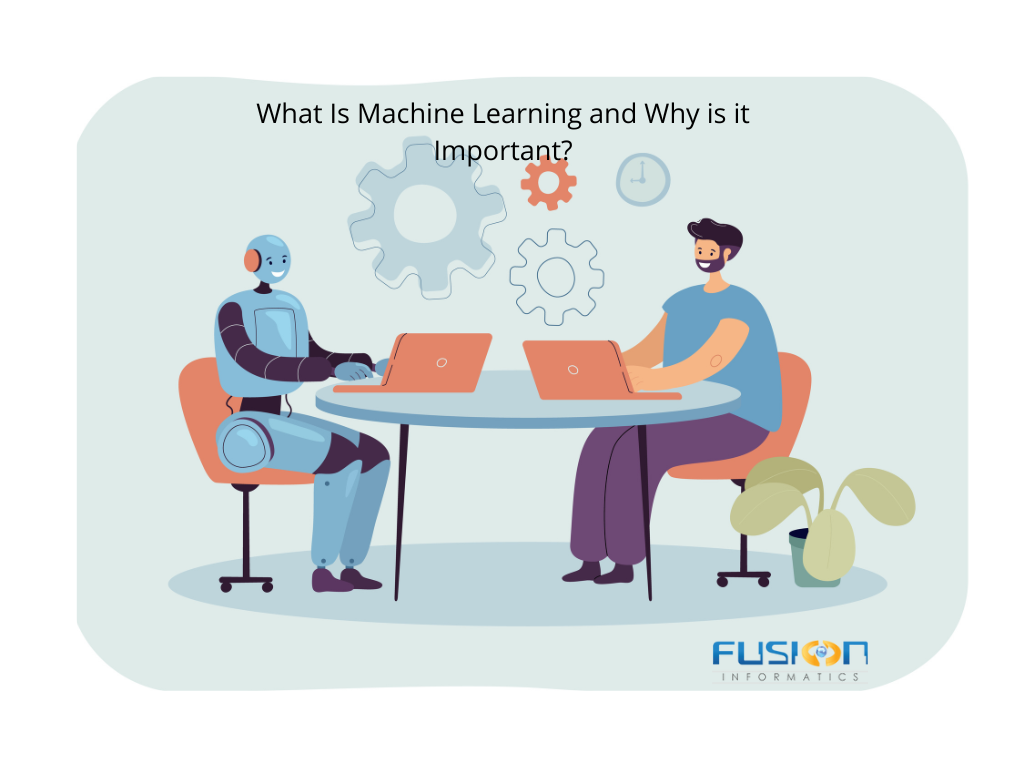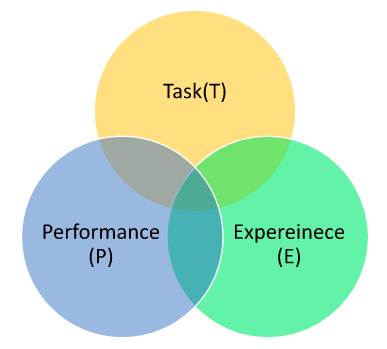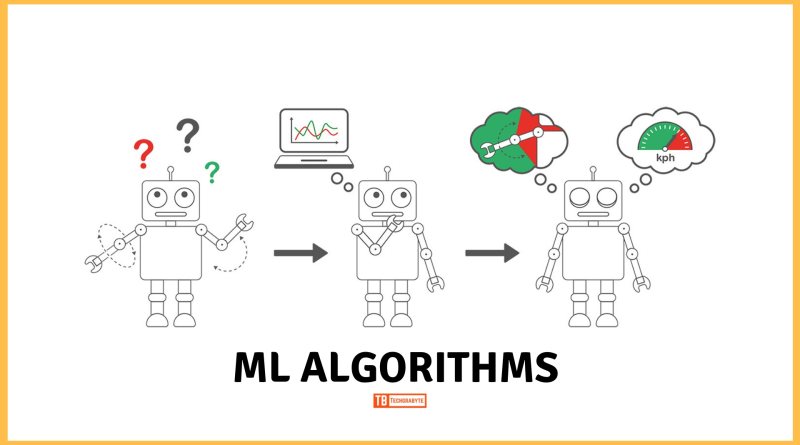
Machine Learning (ML) is a subset of Artificial Intelligence (AI), the king of digital technology. A significant area of computational science, ML (Machine Learning), allows decision-making outside the realm of human interaction.
The very digital technology facilitates smooth analysis, and interpretation of patterns, and structures in data. That enables the process of learning, reasoning & decision-making without human intervention.
Thus, Machine learning(ML) enables users to feed algorithms(computer algorithms) with massive volumes of data so that those computer algorithms can analyze, and make data-driven recommendations, leading to decisions solely based on the input data.
If the ML algorithm identifies any corrections, it can incorporate that information for improving its capability for future decision–making!
Definition – ML is the abbreviated form of Machine Learning, the most powerful digital technology existing today. A branch of AI (Artificial Intelligence), ML (Machine Learning) is based on the idea that computers or systems can learn or gain from data and then identify patterns leading to decision-making without human intervention.
The technology purely focuses on the concrete use of data, and algorithms that would allow imitating the way humans learn and behave, and improving its accuracy, gradually.
Real-Life Example
When you type your question on the Google search engine, what do you get in return?
Multiple replies to your one-question command!
Similarly, when you speak over Alexa and ask your questions, Alexa will reply to you with probable answers.
The language you speak, the language you type, Google, Alexa, and the likes, will reply in your language only.
Which technology is behind this activity?
It is the digital technology Intelligence, your favorite Artificial Intelligence, and Machine Learning techniques. Whether you know it or not, AI-ML lives with you, around you intangibly on your smartphones, smart speakers, healthcare devices, vehicles, gadgets, and so on.
Thus, AI-ML allows seamless conversation between humans & machines!
In the given example, data, ML (Machine Learning) provide the foundation for those magical powers that Alexa wields on you (that you are so fond of!)
Machine Learning: How Does it Work?
Simply put, in ML (Machine Learning), computers/systems apply certain statistical learning techniques that automatically lead to identifying patterns in data. And these techniques are ultimately used to make predictions accurately.
Thus, the basic concept of ML (Machine Learning) incorporates the use of statistical learning, and optimization methods, thereby allowing computers/systems to analyze datasets, and then identify patterns!
Varied ML techniques based on data input, and leveraging data mining are then used to identify historic trends, and then inform future models!
Typically, a supervised ML algorithm roughly consists of three components
A Decision-Process
It is a recipe of certain steps and calculations which takes in the data and makes guesses about the kind of pattern an algorithm is searching for.
An Error-Function
It involves a method that measures the efficacy of ‘guesses’ made, it measures how good those guesses have been by performing comparisons with known examples available. It measures if the decision process got it right. And, if it did not get it right, then it helps to find out the misses and their intensity.
An Optimization-Process/Updating-Process
It involves a method that allows an algorithm to find out/locate the misses and related updates, like, how did the decision-process come to this very conclusion/final decision that has led to so many misses; and, it ensures next time this kind of misses won’t happen(intensity of misses will be less).
Can you relate to the following representation now?

Thus, Machine Learning (ML), as a subset of AI (Artificial Intelligence), is the magnificent field of computer science consisting of learning algorithms to improve P (performance), executing given T (tasks), over time with related E (experience).
Machine Learning Models – Types/Categories
Defined by the presence/absence of human influence on raw data sets (like, a reward is offered, labels used or not, specific feedback is provided, etc.), there exist various types of ML(Machine Learning) models:
Supervised-Learning Model
Datasets that are being taken/used are already classified and pre-labeled by users. This facilitates the algorithm to see the accuracy of its performance.
Unsupervised-learning Model
Raw datasets that are being taken/used are not labeled (unlabeled). An algorithm does the identification of patterns as well as relationships within the present data and no help from users is involved in this model.
Semi-Supervised- Learning Model
This model involves structured, unstructured datasets, which allow an algorithm to make independent conclusions. The two data types(structured, and unstructured) are combined into one training dataset that allows the ML algorithm to learn how to label the unlabeled data.
Reinforcement-Learning Model
This model allows an algorithm to learn from its own experiences. It learns from its varied trials and tested methods, leading to misses and errors.
To be lucid, under this ML model, the dataset adopts a system called the ‘rewards & punishment’ system, and it offers feedback to the algorithm allowing it to learn from personal experiences. In short, the Reinforcement Learning model is a behavioral ML model.
Let’s see how Machine Learning AI Capabilities are enabling content personalization at length, leading to organizations’ ability to scale and enhance their customer experience!
What are a few commonly used Machine Learning Algorithms?

The main purpose of ML (Machine Learning) is to make data analysis by using various ML algorithms. Developers across the globe can leverage Machine Learning capabilities to improve the efficiency, accuracy, and productivity of various tasks undertaken without any manual help.
Professionals in the field of data science, computer science, digital technology, and other areas can use strong ML algorithms for their specific goals.
Let us see a few ML algorithms that companies are adopting in their business settings the world over:
Linear Regression ML Algorithm
Linear regression ML algorithm analyzes the relationship between independent input variables and target variables (at least one variable has to be present). Then it is used to predict continuous outcomes, viz., variables that can take any numerical outcome.
For instance, based on available data regarding property and its neighborhood, can an ML model predict a house’s sale value? If the data relationship under observance tends to follow a straight line, it leads to creating a linear relationship in the process. It allows to observe data points whether they are increasing, decreasing, or remaining at the same level relative to any independent variable(like, position or time elapsed).
ML models are employed to analyze data and map linear regressions. In short, the linear regression ML algorithm allows an ML model to map out a linear relationship/ map out a straight line via the datasets being used.
Logistic Regression ML Algorithm
Logistic Regression ML algorithm falls under a supervised learning model. It is used for classifying problems, and here it does not follow the method of linear regression of continuous output, but a logistic model does the prediction work here.
The very logistic model predicts the probability or chances of a binary event occurring. For instance, based on a given email in a folder, can an ML model predict if the content inside this email is spam or not? Thus, ML models can use a logistic regression algorithm for determining varied categorical outcomes.
Neural Networks AI-ML Algorithm
Neural networks are AI (Artificial Intelligence)- ML algorithms that try to replicate the manner in which human brains process multiple information to understand, interpret and apply intelligence towards classifying data.
These AI-ML algorithms are widely used in areas like data and speech for recognizing patterns, language translation, predicting financial conditions/market situations, and have many more applications.
All these patterns they recognize through millions of interconnected processing nodes. It is through layers, that data is fed forward, and these layers are given the task to process, and assign weights to them before sending them to the next layer of nodes, and the chain continues. Neural Networks algorithms constitute powerful ML models to serve desired purposes and tasks.
Decision – Trees ML Algorithms
Decision trees ML algorithms are data structures that have nodes and are used for testing against the given input data. All these input data are tested against the leaf nodes down the tree, and the motive is to produce the desired and correct output.
Due to their tree-like structures, they can easily be understood just by visual representations of them. The decision tree ML algorithm is designed for categorizing data based on certain categorization schemes.
Decision trees are a supervised learning method; it is that field of ML (Machine Learning) that refers to how a predictive ML model is created via the training of a learning algorithm!
Random-Forest ML Algorithms
Using various Decision Tree models, Random Forest models can classify data at once (in one go). Just like the Decision-Tree method, Random Forest algorithms are used for determining varied classifications of categorical variables/regression of continuous variables.
Based on a user’s specification, these Random Forest models can generate many Decision Trees leading to the formation of ensembles. And then based on input data, each tree makes its specific prediction.
After that, the Random Forest ML algorithm predicts by combining all predictions done by all the Decision Trees within the ensembles.
TensorFlow is a hands-on machine learning platform that is free and open source.
Why Machine Learning (ML) is so Important?
Data remains the core, the base of all businesses across industries the world over. It helps you to stay ahead of your competitors if you follow data-driven decisions for your business rather than a legacy approach.
Machine Learning (ML) is the key to unlocking valuable customer data, and corporate data, and based on those data, the decision-making process occurs thereby keeping an organization ahead of the competition!
That’s why organizations/ companies across the world are adopting AI-ML digital tools & technologies leading to enhanced efficiency and productivity in their business landscape.
Two main reasons behind the importance of ML are:
Data Scaling Capability
Organizations across industries face numerous data volumes every day, and these data exist in structured/unstructured forms. These datasets need thorough processing for varied end-users.
ML models are programmed in such a manner that facilitates these data to process on their own and come out with an accurate conclusion. ML provides data processing power to companies for improved and efficient outcomes.
The manner ML models identify patterns, make predictions and help in decision making, is unmatched making it an important digital technology.
Uncovering Hidden Insights
ML allows for unexpected findings. ML algorithms can suitably find out insights that are so hidden and buried inside herculean data sources. Owing to its capability to update autonomously, an ML algorithm can provide more enhanced, improved, and accurate data analysis with every run it undertakes.
It means, it improves itself, on its own by teaching itself out of every analysis it does for datasets. Without human intervention, ML algorithms’ iterative nature of learning is valuable and unique, and in the process identify patterns, and uncover insights that amaze the world.
Evolution Of Machine Learning
Machine Learning (ML) is getting popular with its inherent capabilities befitting industries today, however, the concept is not new. As per Forbes, ML (Machine Learning) originated in the 1950s.
Arthur Samuel wrote the first program that involved a game of checkers for IBM in the year 1952. Soon followed ML works from other pioneers, like in 1957 Frank Rosenblatt designed the first neural network, and in 1981, Gerald DeJong introduced explanation-based learning.
A major shift occurred in the realm of Machine Learning during the 1990s. The focus was now aligned towards a data-driven approach while shifting from a knowledge-based approach. This decade was a critical period for ML evolution. Scientists had started developing computer programs that would be able to analyze large volumes of data as well as learn in the process.
In the following decade, during the 2000s, Unsupervised Learning made forays into the ML world. Eventually, the decade witnessed the advent/invention of Deep Learning, and also Machine Learning became ubiquitous as a practice.
Another remarkable instance in the ML evolution was marked by IBM supercomputer Deep Blue. In 1997, Deep Blue, equipped with an ML algorithm beat Russian chess grandmaster Gary Kasparov. Similarly, in 2016, Google’s DeepMind AI-ML program AlphaGo gave a big boost to the ML fraternity.
In the present scenario, AI-ML researchers, and scientists, are working hard to expand their applications across industries. AI-ML applications are becoming popular today because they have moved from server-based systems to the seamless environment created by Cloud technology.
Google introduced ML capabilities alongside Deep learning in its Google Next product. Companies like Microsoft, Amazon, IBM, and Baidu have been creating innovative ML platforms through their varied enterprise cloud services and open-source projects.
Undoubtedly, Machine Learning is gaining a massive adoption on a global scale owing to its inherent capabilities in helping companies achieve goals and business outcomes.
Pros and Cons of Machine Learning
| Pros | Cons |
| It automates everything (no human intervention) | Required large labeled training data (Supervised ML) |
| Continuous improvement scope | Misinterpretation of results generated by ML algorithms |
| Big range of applications | Susceptible to errors even though it is an autonomous technology (for unsupervised ML) |
| Efficient data handling | Needs substantial computing resources to function (Reinforcement ML) |
| Accurate decision-making, predictions | Less representative while batch processing |
| Can easily identify trends, patterns | Parallel processing compels hardware in the network to be dependent |
Who Can Use Machine Learning?
Multiple industries are benefitting from ML capabilities. Some of the use cases as per industry are:
Manufacturing Industry
ML helps in Predictive maintenance & condition monitoring
Retail
In the retail sector, ML helps in upselling & cross-channel marketing
Healthcare & Life Sciences
ML helps to identify, recognize diseases, and leads to risk-mitigation
Financial Services
ML helps towards risk analytics & regulation
Travel & Hospitality
ML helps towards dynamic pricing
Energy
ML helps in this sector in optimizing energy demand and supply
Top ML Applications in 2022 and beyond
- Virtual Personal Assistants
- Example – Google Assistant, Alexa, Cortana, Siri
- Traffic Predictions
- Social Media Personalization
- Email Spam Filtering
- Online Fraud Detection
- Stock Market Trading
- Assistive Medical Technology
- Automatic Language Translation (AI-ML-NLP)
- Personalized Healthcare Treatments
- Product Recommendations
- Sentiment Analysis
- Banking Domain Functions
What Next?
Be proactive! That’s the need of the hour. Companies around the world are grappling with challenges related to data sharing and access, viz., there are various types of endpoints being used to access information. Data stays in the cloud, on desktops, laptops, smartphones, tablets, pen drives, and others.
Moreover, in most cases, these devices belong to the end-users, and customers and not directly to the companies involved. This poses risks to data safety and security.
AI-ML-predictive analytics along with IoT technology can help companies to mitigate the risks involved. Varied applications like fraud detection, image recognition, demand forecasts, predicting consumer buying behavior, and predicting healthcare diseases (like cancer) at an early stage, make the ML (Machine Learning) technology a significant booster for your overall growth.



